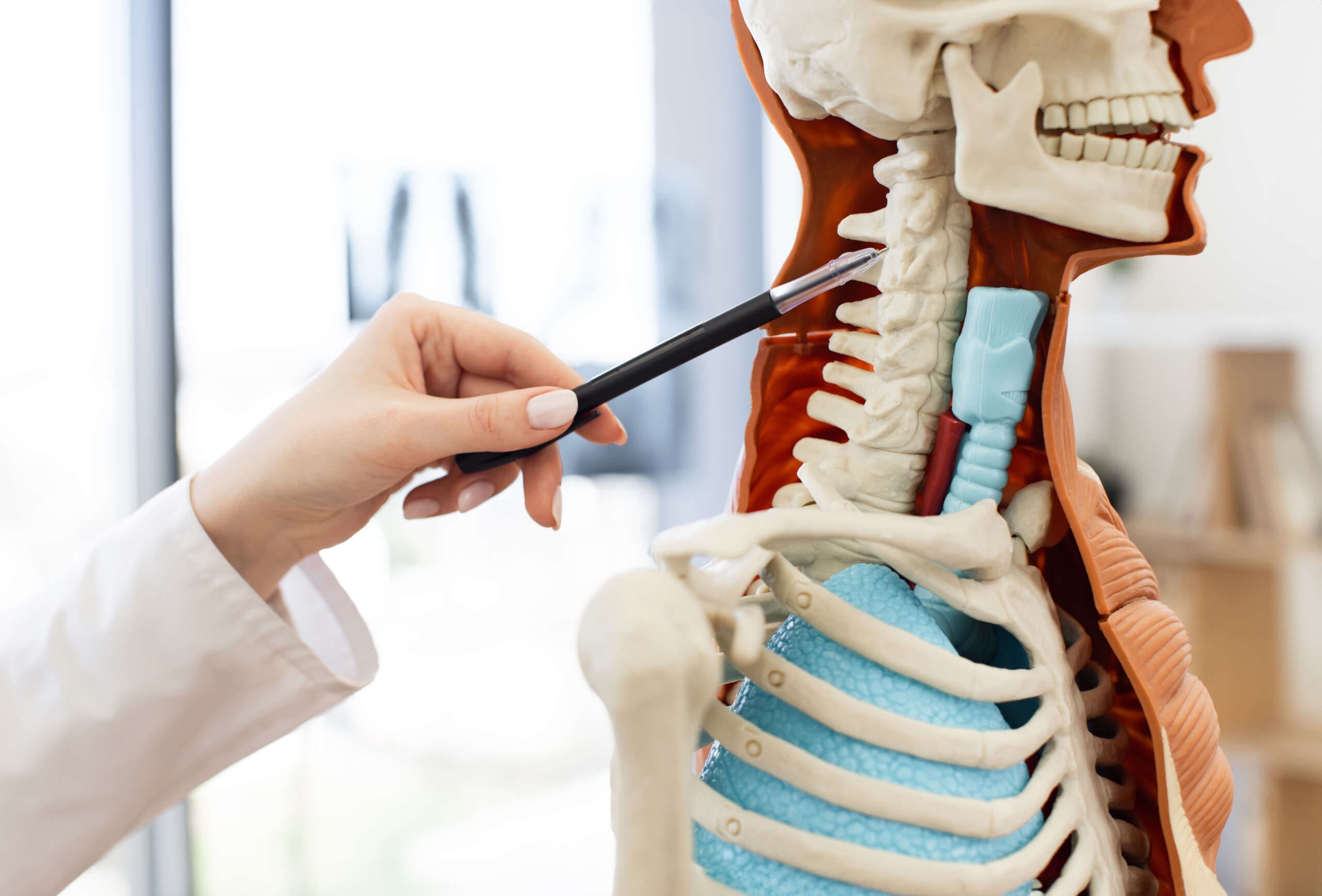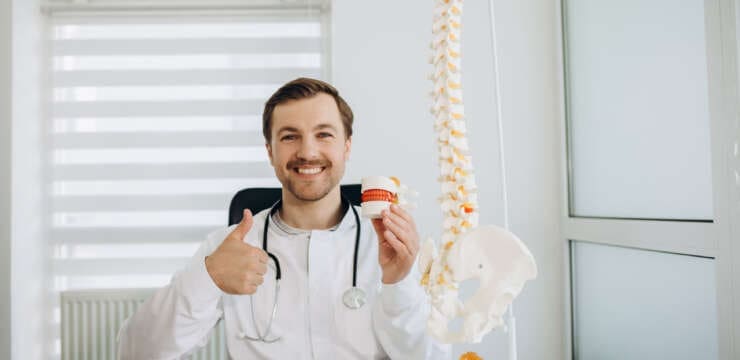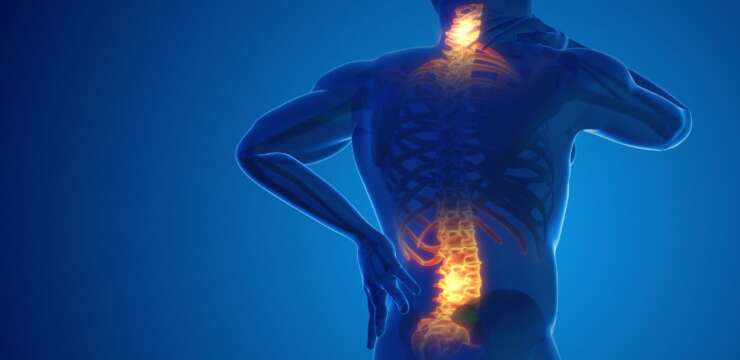
Examine how automobile accidents can injure musculoskeletal ligaments, highlighting the importance of proper care and attention.
Table of Contents
Introduction
Imagine a scenario where a motor vehicle accident (MVA) unexpectedly disrupts your routine as you cruise down the road. It’s like a scene from a grim fairy tale, where the villain is a speeding car and the victims are your body’s unsung heroes—ligaments. These tough, fibrous bands hold your bones together, but when an MVA strikes, they can be stretched, torn, or completely snapped, leaving you with pain and a long road to recovery. However, there is a hero in El Paso, Texas: Dr. Alexander Jimenez, a dual-licensed chiropractor and nurse practitioner, who is prepared to combat these injuries using science, skill, and integrative magic.
In this comprehensive guide, we’ll unravel the mysteries of musculoskeletal ligaments in the upper body quadrant—encompassing the neck, shoulders, and back—and explore how MVAs can cause damage to them. We’ll delve into their structure, function, and physiology; examine their role in neck and back pain; and highlight the clinical expertise of Dr. Jimenez, a distinguished practitioner specializing in personal injury victims in El Paso. With a sprinkle of Wednesday Addams-style humor to keep things lively, we’ll ensure this journey through medical science is both informative and engaging. However, we will conclude on a serious note, highlighting the importance of proper care and incorporating a disclaimer to maintain a realistic perspective.
Ligamentous Injuries from Motor Vehicle Accidents
Structure of Ligaments
Ligaments are dense, collagenous tissues that connect bones across joints, acting like the body’s internal scaffolding. In the upper body quadrant, key ligaments include:
- Cervical Spine (Neck): The anterior longitudinal ligament (runs along the front of the spine), the posterior longitudinal ligament (along the back), and the ligamentum flavum (between vertebrae).
- Thoracic and Lumbar Spine (Back): Interspinous ligaments (between spinous processes) and supraspinous ligaments (along the tops of spinous processes).
- Shoulders: Coracohumeral ligament and acromioclavicular ligament, stabilizing the shoulder joint.
Ligaments are primarily composed of water (about two-thirds) and solids (one-third), with collagen making up 75% of the solid component, mostly type I collagen for strength, alongside smaller amounts of types III, VI, V, XI, and XIV. They also contain proteoglycans, elastin, and proteins like actin and integrins. Collagen fibers, arranged in parallel bundles with a characteristic “waviness” or crimp, absorb tension while maintaining flexibility. An outer layer called the epiligament, rich in blood vessels and nerves, supports healing and proprioception (the sense of joint position).
Function of Ligaments
Ligaments serve three main functions:
- Mechanical Stability: They passively stabilize joints, guiding them through a normal range of motion under tensile loads. Their nonlinear behavior means they’re compliant under low loads but stiffen as loads increase, absorbing energy until failure.
- Viscoelastic Properties: Ligaments exhibit load relaxation (decreased stress under constant deformation) and creep (elongation under continual load), which can lead to joint laxity if excessive, particularly after injury or surgery.
- Proprioception: Ligaments contain sensory nerves that provide feedback to muscles, aiding in joint position sense and movement coordination.
Physiology of Ligaments
Ligaments are dynamic tissues composed of fibroblasts that synthesize the extracellular matrix. These cells communicate via cytoplasmic extensions and gap junctions, coordinating matrix production. Collagen synthesis involves procollagen molecules forming fibrils through cross-linking, a process that strengthens with age. During growth, collagen is more soluble and immature; in adulthood, it becomes insoluble and stronger. The blood supply from arteries, such as the superior medial geniculate artery, supports healing in the epiligament; however, ligaments have limited vascularity compared to muscles.
How MVAs Cause Ligamentous Injuries
Motor vehicle accidents generate sudden, high-impact forces that can overwhelm ligaments’ tensile strength. The most common injury mechanism is whiplash, where the neck undergoes rapid hyperextension (backward movement) followed by hyperflexion (forward movement). This type of accident can stretch or tear ligaments, such as the anterior and posterior longitudinal ligaments, in the cervical spine. In the back, compressive or rotational forces can damage interspinous or supraspinous ligaments, leading to sprains (partial tears) or complete ruptures.
For example, a rear-end collision may cause the head to snap back, overstretching the anterior longitudinal ligament. At the same time, a side-impact crash could twist the spine, affecting the interspinous ligaments. These injuries often occur in conjunction with muscle strains, disc herniations, or fractures, which can complicate diagnosis and treatment.
Healing Process and Challenges
Ligament healing follows three phases:
- Hemorrhage/Inflammation (Days 1–7): Bleeding and inflammation occur at the injury site, recruiting immune cells to clear debris.
- Matrix/Cellular Proliferation (Weeks 1–6): Fibroblasts produce new collagen to form scar tissue, bridging the gap between torn ends.
- Remodeling/Maturation (Months to Years): The scar tissue reorganizes, but it remains less organized than the original ligament, with a higher proportion of type III collagen (weaker) and smaller fibril diameters.
Healing is slow and often incomplete. Research shows that healed ligaments only regain about 10–20% of their normal flexibility and strength, with the ability to handle stress being around 50% of what it should be, and they stretch more easily under pressure. Factors such as the initial gap size between torn ends, contact between the ends, and joint movement during healing influence the outcomes. Persistent flaws, such as altered proteoglycan ratios (increased biglycan, decreased decorin) and abnormal innervation, can lead to chronic instability and pain.
References
- Akeson, W. H., Woo, S. L.-Y., Amiel, D., & Frank, C. B. (1988). The biology of ligaments. In F. J. Funk & L. Y. Hunter (Eds.), Rehabilitation of the Injured Knee (pp. 93–148). Mosby.
- Frank, C., Woo, S., Andriacchi, T., et al. (1988). Normal ligament: Structure, function and composition. In S. L.-Y. Woo & J. A. Buckwalter (Eds.), Injury and Repair of the Musculoskeletal Soft Tissues (pp. 45–101). American Academy of Orthopaedic Surgeons.
Role of Ligamentous Injuries in Neck and Back Pain
Mechanisms of Pain
Ligamentous injuries disrupt joint stability, leading to abnormal movement that strains surrounding muscles, nerves, and other tissues. In the neck, damaged ligaments can cause:
- Cervical Instability: Excessive movement between vertebrae, leading to pain, stiffness, and headaches.
- Referred Pain: Irritation of nerves can cause pain to radiate to the shoulders or arms.
- Neurological Symptoms: In severe cases, nerve compression may cause tingling or weakness.
In the back, ligament injuries contribute to:
- Low Back Pain: Often chronic, due to instability in the lumbar spine.
- Sciatica: An irritated nerve can cause pain that radiates down the legs.
- Reduced Mobility: Difficulty with bending, lifting, or prolonged sitting.
Recent studies suggest that disruptions in joint innervation, combined with injury or aging, may contribute to the development of osteoarthritis, a multifactorial condition that warrants further research. Ligament strain also triggers neurological feedback, altering proprioception and potentially amplifying pain signals.
Why These Injuries Are Significant
Ligamentous injuries are often underdiagnosed because they may not appear on standard X-rays. Advanced imaging techniques, such as MRI or CT scans, are crucial for accurately identifying soft tissue damage. Without proper treatment, these injuries can lead to chronic pain, reduced quality of life, and increased risk of further injury.
References
- Woo, S. L., & Young, E. P. (1991). Structure and function of tendons and ligaments. In V. C. Mow & W. C. Hayes (Eds.), Basic Orthopaedic Biomechanics (pp. 199–243). Raven Press.
- Lo, I. K. Y., Thornton, G., Miniaci, N., et al. (2003). Structure and function of diarthrodial joints. In J. B. McGinty (Ed.), Operative Arthroscopy (3rd ed., pp. 41–126). Lippincott Williams and Wilkins.
From Injury to Recovery- Video
Dr. Alexander Jimenez: A Leader in Personal Injury Care
Who is Dr. Alexander Jimenez?
Dr. Alexander Jimenez is a board-certified Family Practice Nurse Practitioner (FNP-BC) and Doctor of Chiropractic (DC) with over 25 years of experience in El Paso, Texas. His dual licensure enables him to integrate chiropractic techniques with advanced medical diagnostics, providing a unique “dual-scope” approach to treating motor vehicle accident (MVA)- related injuries. His clinic, Injury Medical & Chiropractic Clinic, specializes in personal injury cases, including auto accident care, work injuries, and complex musculoskeletal conditions.
Dr. Jimenez’s integrative approach incorporates.
- Chiropractic Care: Adjustments to restore spinal and joint alignment.
- Functional Medicine: Addressing root causes through nutrition, lifestyle, and environmental factors.
- Advanced Diagnostics: Collaboration with Diagnostic Outpatient Imaging for MRI, CT scans, and X-rays.
- Rehabilitation: Personalized exercise programs to support healing.
Clinical Insights
Dr. Jimenez employs a comprehensive strategy for ligamentous injuries:
- Diagnostic Imaging: He utilizes MRI to detect ligament tears and CT scans to identify associated fractures, ensuring an accurate diagnosis.
- Functional Medicine Assessments: Tools like the Living Matrix evaluate genetics, lifestyle, and environmental factors to optimize healing.
- Chiropractic Adjustments: These restore joint function, reducing pain and improving mobility.
- Rehabilitation Programs: Tailored exercises strengthen muscles around injured ligaments, promoting stability.
- Patient Education: Dr. Jimenez empowers patients with knowledge about their injuries and the recovery process.
His ability to provide detailed medical documentation is crucial for personal injury cases, enabling patients to navigate legal claims while receiving top-tier care.
References
- Jimenez, A. (n.d.). Why Choose Dr. Jimenez and Clinical Team. Retrieved from Why Choose Dr. Jimenez
- Jimenez, A. (n.d.). Personal Injury Doctor. Retrieved from Personal Injury Doctor
Importance of Personal Injury Cases in El Paso
Personal injury cases from MVAs are complex, involving physical, emotional, and legal challenges. Victims often face:
- Complex Injuries: From whiplash to spinal cord damage, requiring specialized care.
- Legal Hurdles: Proving injury severity for fair compensation.
- Financial Strain: Medical bills and lost wages add to the burden.
Dr. Jimenez’s expertise is invaluable in El Paso, where he:
- Provides thorough medical documentation for legal claims.
- Offers expert testimony to support patients’ cases.
- Ensures comprehensive treatment to prevent chronic conditions.
His clinic’s focus on integrative care, combining chiropractic, functional medicine, and advanced diagnostics, makes it a vital resource for MVA victims seeking recovery and justice.
References
- Jimenez, A. (n.d.). Personal Injury Doctor. Retrieved from Personal Injury Doctor
- Jimenez, A. (n.d.). Contact Insert Post. Retrieved from Contact Dr. Jimenez
Conclusion
Ligamentous injuries from MVAs are a serious concern, potentially leading to chronic neck and back pain if not properly treated. These injuries disrupt the delicate balance of joint stability, causing pain, reduced mobility, and long-term complications. Dr. Alexander Jimenez, with his dual expertise as a chiropractor and nurse practitioner, offers a beacon of hope for victims in El Paso. His integrative approach, which combines advanced imaging, chiropractic care, and functional medicine, ensures comprehensive treatment tailored to each patient’s specific needs.
If you’ve been in an MVA and are experiencing pain, don’t wait—seek care from a specialist like Dr. Jimenez. Early intervention can prevent chronic issues and support your recovery journey. Contact his clinic at 915-850-0900 or visit Injury Medical Clinic to start your path to healing.
Disclaimer
This blog post is for informational purposes only and should not be construed as medical advice. Always consult a qualified healthcare professional for diagnosis and treatment of any medical condition. The information provided is not intended to replace a one-on-one relationship with a licensed physician. Make healthcare decisions based on your research and partnership with a qualified provider.
Key Citations
- The biology of ligaments in Rehabilitation of the Injured Knee
- Normal ligament structure, function, and composition
- Structure and function of tendons and ligaments
- Structure and function of diarthrodial joints
- Why Choose Dr. Jimenez and Clinical Team
- Personal Injury Doctor in El Paso, TX
- Contact Dr. Jimenez’s Accident & Injury Team
- [Dr. Jimenez Imaging & Diagnostics Team](dralexjimenez.com/category Chiropractice-examination/imaging-diagnostics/)
- The Abdomen: Diagnostic Imaging Approach
- Knee Arthritis: Diagnostic Imaging Approaches
- Spinal Neoplasms Diagnostic Imaging Approach
- Spinal Infection Diagnostic Imaging Approach
- Spinal Arthritis Diagnostic Imaging Approach
- Diseases of the Chest Diagnostic Imaging
- Gaining Insight on Auto Injury Care Options
Disclaimers
Professional Scope of Practice *
The information herein on "Musculoskeletal Ligaments after Automobile Accidents Explained" is not intended to replace a one-on-one relationship with a qualified health care professional or licensed physician and is not medical advice. We encourage you to make healthcare decisions based on your research and partnership with a qualified healthcare professional.
Blog Information & Scope Discussions
Welcome to El Paso's wellness blog, where Dr. Alex Jimenez, DC, FNP-C, a board-certified Family Practice Nurse Practitioner (FNP-C) and Chiropractor (DC), presents insights on how our team is dedicated to holistic healing and personalized care. Our practice aligns with evidence-based treatment protocols inspired by integrative medicine principles, similar to those found on dralexjimenez.com, focusing on restoring health naturally for patients of all ages.
Our areas of chiropractic practice include Wellness & Nutrition, Chronic Pain, Personal Injury, Auto Accident Care, Work Injuries, Back Injury, Low Back Pain, Neck Pain, Migraine Headaches, Sports Injuries, Severe Sciatica, Scoliosis, Complex Herniated Discs, Fibromyalgia, Chronic Pain, Complex Injuries, Stress Management, Functional Medicine Treatments, and in-scope care protocols.
Our information scope is limited to chiropractic, musculoskeletal, physical medicine, wellness, contributing etiological viscerosomatic disturbances within clinical presentations, associated somato-visceral reflex clinical dynamics, subluxation complexes, sensitive health issues, and functional medicine articles, topics, and discussions.
We provide and present clinical collaboration with specialists from various disciplines. Each specialist is governed by their professional scope of practice and their jurisdiction of licensure. We use functional health & wellness protocols to treat and support care for the injuries or disorders of the musculoskeletal system.
Our videos, posts, topics, subjects, and insights cover clinical matters, issues, and topics that relate to and directly or indirectly support our clinical scope of practice.*
Our office has reasonably attempted to provide supportive citations and has identified the relevant research studies or studies supporting our posts. We provide copies of supporting research studies available to regulatory boards and the public upon request.
We understand that we cover matters that require an additional explanation of how they may assist in a particular care plan or treatment protocol; therefore, to discuss the subject matter above further, please feel free to ask Dr. Alex Jimenez, DC, APRN, FNP-BC, or contact us at 915-850-0900.
We are here to help you and your family.
Blessings
Dr. Alex Jimenez DC, MSACP, APRN, FNP-BC*, CCST, IFMCP, CFMP, ATN
email: coach@elpasofunctionalmedicine.com
Licensed as a Doctor of Chiropractic (DC) in Texas & New Mexico*
Texas DC License # TX5807
New Mexico DC License # NM-DC2182
Licensed as a Registered Nurse (RN*) in Texas & Multistate
Texas RN License # 1191402
ANCC FNP-BC: Board Certified Nurse Practitioner*
Compact Status: Multi-State License: Authorized to Practice in 40 States*
Graduate with Honors: ICHS: MSN-FNP (Family Nurse Practitioner Program)
Degree Granted. Master's in Family Practice MSN Diploma (Cum Laude)
Dr. Alex Jimenez, DC, APRN, FNP-BC*, CFMP, IFMCP, ATN, CCST
My Digital Business Card






